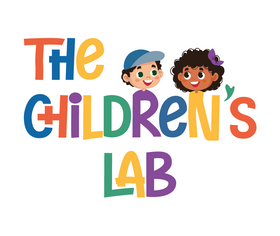
Sensory Bin Essentials: A Starter Guide for Kids’ Play
Sensory Bin Essentials: A Starter Guide for Kids’ Play
If you’re a parent, teacher, or caregiver of toddlers and preschoolers, chances are you’ve heard the buzz about sensory bins. But what exactly are they? Why are they so effective for early childhood development? And how can you set one up at home without turning your living room into a mess?
This complete starter guide will walk you through everything you need to know—from the benefits of sensory bins to types like rice sensory bins, nature sensory bins, and colorful, themed play setups your child will love.
What Is a Sensory Bin?
A sensory bin is a container filled with materials and objects that stimulate a child’s senses—particularly touch, sight, and sound. They’re designed to promote open-ended play, exploration, and learning.

A basic sensory bin might include:
-
A container (like a shallow plastic bin or tray)
-
A base material: rice, pasta, sand, water beads, etc.
-
Loose parts: scoops, cups, animal figurines, spoons, toys, letters
-
Theme: colors, seasons, numbers, animals, holidays
It’s a simple concept, but the play value is massive.
Read more on: What Is a Sensory Bin? A Complete Guide to Engaging Sensory Play
What Is the Objective of the Sensory Bin?
The main goal of a sensory bin is to support:
-
Sensory development
-
Fine motor skills
-
Focus and concentration
-
Creativity and imagination
-
Language and cognitive growth
It’s also fantastic for calming overstimulated or anxious children, making it a must-have for daily play routines.
What Are the Benefits of Sensory Play?
Wondering why sensory play has become a core activity in most Montessori and early learning settings? Here are some key sensory bin benefits:
|
Benefit |
Description |
|
Motor skills development |
Scooping, pouring, and grasping refine hand-eye coordination |
|
Language building |
Children describe textures, colors, and actions during play |
|
Problem-solving |
Open-ended setups allow kids to make decisions and explore freely |
|
Emotional regulation |
Sensory bins help children self-soothe and stay calm |
|
Cognitive growth |
Sorting, counting, and matching support early math and logic skills |
|
Social interaction |
Encourages turn-taking and collaborative play in group settings |
What to Include in a Sensory Bin?
Here’s a basic checklist to help you build your first sensory bin:
✅ Bin or Tray
-
Clear plastic storage bins work great
-
Use a size that suits your child’s play area
-
Bonus: choose a bin with a lid for easy storage
✅ Sensory Base
Popular options include:
-
Rice (white or colored)
-
Pasta (spirals, shells, rainbow)
-
Kinetic sand
-
Water or ice
-
Oats, beans, lentils
The Children’s Lab Rainbow Rice Mini Kit and Rainbow Pasta Mini Kit are great ready-to-play options!
✅ Tools & Loose Parts
Include:
-
Measuring spoons
-
Cups
-
Small tongs
-
Scoopers
-
Funnels
-
Animal or food figurines
✅ Themed Elements
Seasonal items like fall leaves, plastic snowflakes, or flowers can create nature sensory bins. You can also add letters, numbers, or shapes for educational value.
FAQ’s
1. What’s the ideal age to start using sensory bins?
Sensory bins are perfect for toddlers and preschoolers, typically starting around 12 months with close supervision. At The Children’s Lab, our sensory kits are thoughtfully designed to be safe, age-appropriate, and engaging for kids between 1 and 7 years.
2. How can I set up a sensory bin at home without the mess?
Creating a sensory bin is easy with the right tools. Start with a shallow container and a sensory base like rice or pasta. Add scoops, cups, and small toys. To keep it mess-free, place a playmat underneath and set it up on a table or floor space. Or better yet—try our pre-curated Mini Sensory Kits, which come neatly packed and ready for play.
3. How often should my child play with a sensory bin?
There’s no fixed rule! Even 15–20 minutes of sensory play a day can support focus, fine motor skills, and emotional calm. Many parents at The Children’s Lab use our bins daily as part of their child’s screen-free playtime or learning routine.
4. What should I put inside a sensory bin?
The basics include a bin, a sensory base (like Rainbow Rice or Rainbow Pasta), tools like scoops or tongs, and themed items like animal figurines or alphabets. Our Mini Kits and Sensory Bin Add-ons are perfect for first-timers looking to explore without the guesswork.
5. Are The Children’s Lab kits safe for babies and toddlers?
Yes! All our sensory materials are non-toxic and kid-safe. While adult supervision is always recommended—especially for younger kids—our kits are curated to encourage safe, hands-on play, with textures and tools suited for tiny hands.
